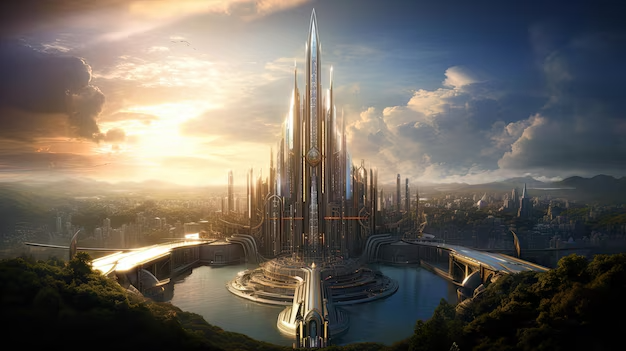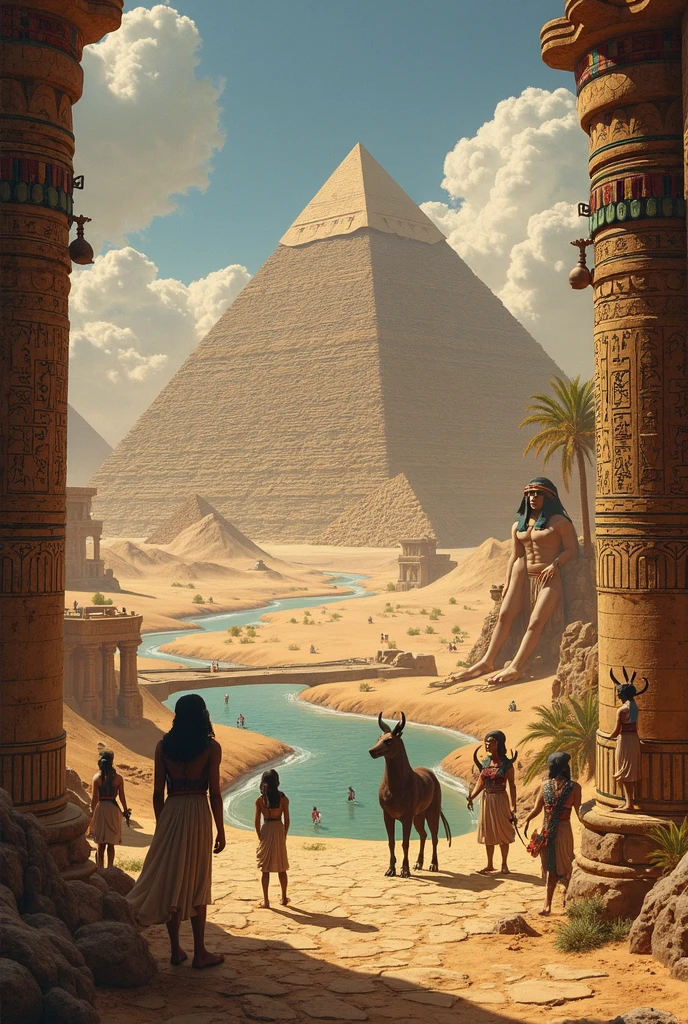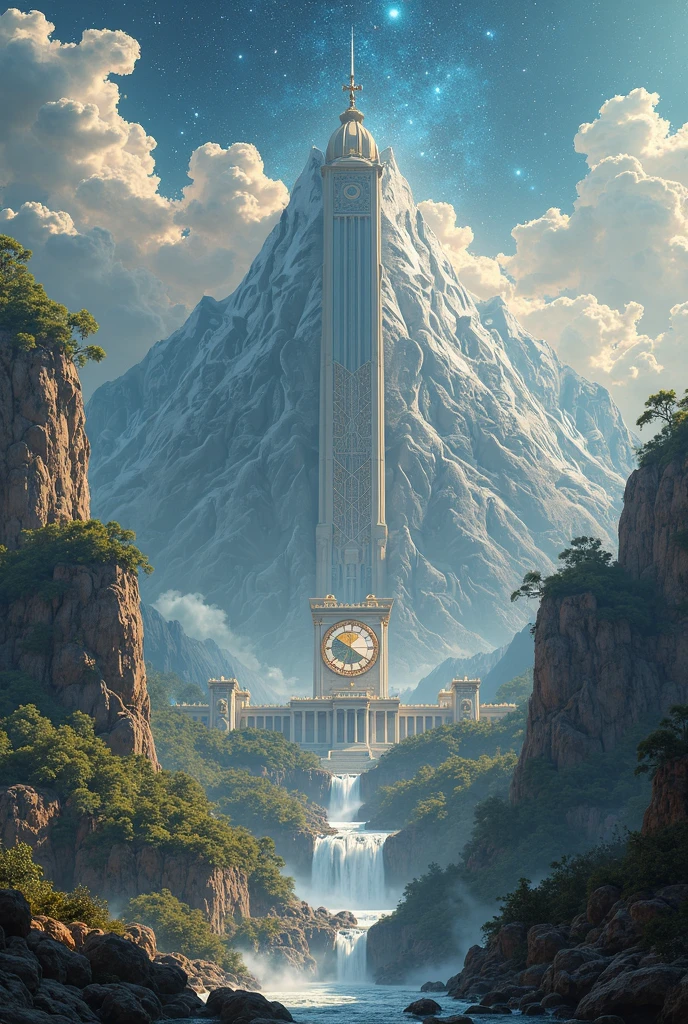Hindu Mythology: The Divine Trinity and Beyond
Hindu mythology is a vast and intricate tapestry of gods, goddesses, and cosmic principles. At its core lies the divine trinity—Brahma, Vishnu, and Shiva—who represent creation, preservation, and destruction, respectively. Among them, Vishnu holds a special place as the preserver of the universe, descending in various avatars to restore cosmic order. This article explores the rich narratives surrounding these deities, their roles, and their significance in texts like the Bhagavad Gita.
The Divine Trinity: Brahma, Vishnu, and Shiva
In Hindu mythology, the universe is governed by three primary deities, each with distinct responsibilities:
- Brahma: The creator, responsible for bringing the universe into existence.
- Vishnu: The preserver, who maintains balance and order.
- Shiva: The destroyer, facilitating transformation and renewal.
While Brahma is less commonly worshipped today, Vishnu and Shiva remain central figures in Hindu devotion, embodying the cyclical nature of existence.
The Role of Vishnu in Hindu Cosmology
Vishnu is revered as the sustainer of life, often depicted resting on the serpent Ananta in the cosmic ocean. His consort, Devi (Lakshmi), symbolizes prosperity and divine grace. Vishnu’s interventions in the world are marked by his avatars, divine incarnations that restore dharma (cosmic order).
| Avatar | Purpose |
|---|---|
| Rama | Defeat the demon king Ravana |
| Krishna | Guide Arjuna in the Bhagavad Gita |
| Kalki | Future avatar to end the Kali Yuga |
The Ten Avatars of Vishnu
According to Hindu tradition, Vishnu descends to Earth in ten primary forms, known as the Dashavatara. These incarnations reflect the evolutionary progression of life and the restoration of righteousness:
- Matsya (The Fish)
- Kurma (The Tortoise)
- Varaha (The Boar)
- Narasimha (The Man-Lion)
- Vamana (The Dwarf)
- Parashurama (The Warrior Sage)
- Rama (The Ideal King)
- Krishna (The Divine Statesman)
- Buddha (The Enlightened One)
- Kalki (The Future Warrior)
Each avatar addresses a unique cosmic crisis, reinforcing Vishnu‘s role as the ultimate protector.
Shiva: The Destroyer and Transformer
While Vishnu preserves, Shiva embodies destruction and regeneration. Often depicted with a third eye and a crescent moon, Shiva’s dance (Tandava) symbolizes the eternal cycle of creation and dissolution. His consort, Devi (Parvati), represents the feminine divine, balancing his fierce energy.
The Bhagavad Gita: Vishnu’s Teachings
The Bhagavad Gita, a 700-verse scripture within the Mahabharata, features Krishna (an avatar of Vishnu) imparting spiritual wisdom to Prince Arjuna. Key teachings include:
- Dharma (Duty)
- Karma (Action)
- Bhakti (Devotion)
- Jnana (Knowledge)
This text remains a cornerstone of Hindu philosophy, emphasizing devotion to Vishnu as a path to liberation.
Devi: The Feminine Divine
In Hindu mythology, Devi (the Goddess) manifests in various forms, including Durga, Kali, and Saraswati. She embodies both nurturing and fierce aspects, complementing the roles of Vishnu and Shiva. For example, Durga slays the buffalo demon Mahishasura, showcasing divine feminine power.
| Form of Devi | Significance |
|---|---|
| Lakshmi | Goddess of wealth and consort of Vishnu |
| Parvati | Consort of Shiva, representing love and devotion |
| Kali | Destroyer of evil forces |
Exploring Hindu Texts and Practices
Hindu mythology is preserved in sacred texts like the Vedas, Puranas, and epics such as the Ramayana and Mahabharata. These works provide insights into the interplay between Vishnu, Shiva, and Devi, offering guidance for spiritual and ethical living.
For further reading, explore these resources:
Discover more fascinating insights into Hindu mythology and other spiritual topics by following us on facebook.com/zatiandrops.
The Cosmic Cycles: Yugas and Time in Hindu Mythology
Hindu cosmology presents time as cyclical, divided into four Yugas (epochs), each marking a decline in righteousness and human virtue. These cycles repeat infinitely, governed by the interplay of Vishnu, Shiva, and Devi. The four Yugas are:
- Satya Yuga: The golden age of truth and dharma, lasting 1,728,000 years.
- Treta Yuga: The age of ritual sacrifice, lasting 1,296,000 years (marked by Rama’s reign).
- Dvapara Yuga: The age of division, lasting 864,000 years (era of Krishna).
- Kali Yuga: The current age of strife, lasting 432,000 years.
At the end of each cycle, Shiva dissolves the universe, allowing Brahma to recreate it anew. Vishnu’s avatars often appear to mitigate the chaos of declining Yugas.
The Symbolism of Shiva’s Nataraja
One of Shiva’s most iconic representations is the Nataraja (Lord of Dance), a bronze sculpture depicting his cosmic dance. Key elements include:
| Element | Meaning |
|---|---|
| Flame in Hand | Destruction of ignorance |
| Drum (Damaru) | Primordial sound of creation |
| Raised Foot | Path to liberation |
This dance symbolizes the perpetual rhythm of birth, death, and rebirth—central to Hindu metaphysics.
The Lesser-Known Avatars of Vishnu
Beyond the ten primary avatars, Vishnu assumes numerous lesser-known forms to address specific crises. Examples include:
- Mohini: A female avatar who deceives demons to retrieve the nectar of immortality.
- Hayagriva: A horse-headed avatar who restores the stolen Vedas.
- Dattatreya: A sage embodying the trinity (Brahma-Vishnu-Shiva).
These avatars highlight Vishnu’s adaptability in preserving cosmic harmony.
The Churning of the Ocean (Samudra Manthan)
A pivotal myth involves Vishnu and Devi collaborating with demons to churn the cosmic ocean for amrita (nectar of immortality). Key events include:
- Vishnu transforms into Kurma (tortoise) to stabilize Mount Mandara as the churning rod.
- Devi emerges as Lakshmi, bestowing prosperity upon the gods.
- Shiva consumes the poison Halahala, saving the universe but turning his throat blue.
This tale underscores interdependence among the trinity and Devi.
Regional Manifestations of the Divine
Hindu mythology adapts regionally, with local deities often syncretized into broader narratives. For instance:
| Deity | Regional Form | Significance |
|---|---|---|
| Vishnu | Jagannath (Odisha) | Lord of the Universe worshipped in wooden form |
| Shiva | Vaidyanath (Jharkhand) | Healer and protector |
| Devi | Meenakshi (Tamil Nadu) | Fish-eyed goddess of Madurai |
The Tantric Traditions: Shiva and Devi’s Esoteric Roles
Tantra, a mystical branch of Hinduism, reinterprets Shiva and Devi as complementary energies:
- Shiva represents consciousness (Purusha).
- Devi embodies primal energy (Shakti).
Their union symbolizes spiritual awakening, depicted in artworks like the Yab-Yum embrace.
Mythology in Daily Worship
Hindu rituals often reenact mythological events. For example:
- Diwali: Celebrates Rama’s return to Ayodhya (linked to Vishnu’s Rama avatar).
- Maha Shivaratri: Honors Shiva’s marriage to Parvati.
- Navaratri: Worships Devi’s victory over the demon Mahishasura.
Recommended External Resources
Discover more fascinating insights into Hindu mythology and other spiritual topics by following us on facebook.com/zatiandrops.
The Concept of Maya and Illusion in Hindu Mythology
One of the most profound philosophical concepts in Hindu mythology is Maya, the cosmic illusion that veils the true nature of reality. Both Vishnu and Shiva are associated with Maya in different ways:
- Vishnu uses Maya to test devotees and maintain cosmic balance
- Shiva as Nataraja dances within the circle of Maya, symbolizing transcendence
- Devi as Mahamaya represents the great illusion that binds souls to material existence
The Three Gunas and Divine Manifestations
Hindu cosmology explains that the divine trinity governs the three fundamental qualities (Gunas) of nature:
| Guna | Deity Association | Characteristics |
|---|---|---|
| Sattva | Vishnu | Purity, harmony, knowledge |
| Rajas | Brahma | Activity, passion, creation |
| Tamas | Shiva | Inertia, darkness, dissolution |
This framework explains how the divine principles manifest in the material world through these interconnected qualities.
The Sacred Geography of Hindu Mythology
Hindu mythology assigns spiritual significance to numerous geographical locations across India:
- Vaikuntha: The celestial abode of Vishnu
- Kailash: The mountain home of Shiva
- Manidvipa: The island palace of Devi in the cosmic ocean
- Varanasi: The earthly city sacred to Shiva
- Dwarka: The sunken city of Krishna (Vishnu’s avatar)
The Seven Sacred Rivers
In Hindu tradition, seven rivers hold special mythological significance:
- Ganga (emanates from Shiva’s hair)
- Yamuna (associated with Krishna’s childhood)
- Saraswati (the hidden mystical river)
- Narmada (created by Shiva’s sweat)
- Godavari (site of Rama’s exile)
- Kaveri (linked to Vishnu’s Kurma avatar)
- Brahmaputra (born from Brahma’s son)
The Vahanas: Divine Vehicles of the Gods
Each major deity in Hindu mythology has an animal vehicle (Vahana) that symbolizes their attributes:
| Deity | Vahana | Symbolic Meaning |
|---|---|---|
| Vishnu | Garuda (eagle) | Speed, power to traverse worlds |
| Shiva | Nandi (bull) | Strength, virility, dharma |
| Devi (as Durga) | Lion/Tiger | Power, fearlessness |
| Brahma | Hamsa (swan) | Discrimination between real and unreal |
The Cosmic Sound: OM and Hindu Mythology
The sacred syllable OM represents the fundamental vibration of the universe in Hindu thought, with each sound component associated with the divine trinity:
- A (Brahma – creation)
- U (Vishnu – preservation)
- M (Shiva – dissolution)
The silence following OM represents the transcendental reality beyond the three deities.
The Five Faces of Shiva
In esoteric traditions, Shiva manifests five faces representing different aspects:
- Isana (northeast face): Grace and spiritual knowledge
- Tatpurusha (east face): The individual soul
- Aghora (south face): The transformative power
- Vamadeva (north face): The beautiful aspect
- Sadyojata (west face): The creative impulse
The Concept of Lila: Divine Play
Hindu mythology often describes the activities of Vishnu, Shiva, and Devi as Lila (divine play), suggesting that cosmic events are expressions of divine joy rather than burdensome responsibilities. Key examples include:
- Krishna’s childhood pranks (Vishnu’s avatar)
- Shiva’s spontaneous dances
- Devi’s playful competitions with Shiva
Discover more fascinating insights into Hindu mythology and other spiritual topics by following us on facebook.com/zatiandrops.
The Asuras: Antagonists in Hindu Mythology
While the Devas (gods) represent cosmic order, the Asuras embody chaos and opposition. These powerful beings frequently challenge the divine trinity, serving as catalysts for Vishnu’s interventions:
- Hiranyakashipu: Defeated by Vishnu’s Narasimha avatar
- Ravana: Vanquished by Rama (Vishnu’s avatar)
- Mahishasura: Slain by Devi as Durga
The Paradox of Asura Devotion
Many Asuras were devout worshippers who gained boons through intense penance:
| Asura | Deity Worshipped | Boon Received |
|---|---|---|
| Bhasmasura | Shiva | Power to turn anyone to ashes |
| Taraka | Brahma | Could only be killed by Shiva’s son |
| Andhakasura | Shiva | Invincibility in darkness |
The Chiranjivis: Immortal Beings
Hindu mythology features seven Chiranjivis (immortals) who exist across cosmic cycles:
- Ashwatthama: Cursed by Krishna to wander eternally
- Hanuman: Vishnu’s devoted servant in Rama avatar
- Vibhishana: Ravana’s righteous brother
- Parashurama: Vishnu’s warrior-sage avatar
- Markandeya: Devotee who witnessed Shiva’s cosmic form
- Kripacharya: Eternal teacher of the Mahabharata
- Ved Vyasa: Compiler of the Vedas and Puranas
The Symbolism of Hanuman
As Vishnu’s eternal devotee in Rama’s service, Hanuman represents:
- Perfect bhakti (devotion)
- Selfless service
- Strength tempered by humility
The Cosmic Serpents in Hindu Mythology
Serpentine beings play crucial roles in Hindu cosmology:
| Serpent | Association | Significance |
|---|---|---|
| Ananta Shesha | Vishnu’s couch | Symbol of infinite time |
| Vasuki | Churning of the ocean | Representation of cosmic energy |
| Kaliya | Krishna’s childhood | Overcoming poisonous influences |
The Nagas: Serpent Deities
These semi-divine beings inhabit the underworld (Patala) and feature in numerous myths:
- Guardians of underground treasures
- Associated with water and fertility
- Worshipped during Nag Panchami festival
The Concept of Darshan in Hindu Worship
The sacred act of seeing and being seen by the divine (Darshan) connects to mythological narratives:
- Arjuna’s Vishwarupa Darshan: Krishna reveals his cosmic form
- Markandeya’s Vision: Sees infant Vishnu floating on banyan leaf
- Shiva’s Third Eye: Grants transformative vision to devotees
Sacred Trees in Hindu Mythology
Various trees hold mythological significance:
| Tree | Deity Association | Mythological Event |
|---|---|---|
| Banyan | Vishnu | Site of Krishna’s teachings |
| Bilva | Shiva | Leaves used in Shiva worship |
| Ashoka | Devi | Sita’s captivity in Ramayana |
The Four Kumaras: Eternal Youths
These four mind-born sons of Brahma represent perpetual celibacy and wisdom:
- Sanaka
- Sanandana
- Sanatana
- Sanatkumara
Their interactions with Vishnu and Shiva feature in several Puranic stories, including their famous encounter with Shiva’s gatekeepers.
Additional Resources
Discover more fascinating insights into Hindu mythology and other spiritual topics by following us on facebook.com/zatiandrops.
The Sacred Weapons of Hindu Deities
Each member of the Hindu trinity possesses distinctive weapons that embody their divine powers:
| Deity | Primary Weapon | Symbolic Meaning |
|---|---|---|
| Vishnu | Sudarshana Chakra | Cosmic order and destruction of evil |
| Shiva | Trishula (Trident) | Three aspects of time (past, present, future) |
| Devi (as Durga) | Various weapons from gods | Combined divine power against evil |
The Legend of Vishnu’s Sudarshana Chakra
This spinning disc weapon has fascinating mythological origins:
- Created from the dust of the sun and Vishnu’s energy
- Used to behead demons like Shishupala
- Represents the cyclical nature of time
The Concept of Avatar in Depth
While Vishnu’s ten avatars are well-known, Hindu texts describe different types of divine incarnations:
- Purna Avatar (Complete incarnation like Krishna)
- Amsa Avatar (Partial manifestation like Vyasa)
- Yuga Avatar (Specific to each cosmic age)
- Shaktyavesha Avatar (Empowered beings like Buddha)
Avatars Beyond the Dashavatara
Several important incarnations exist outside the traditional ten:
| Avatar | Purpose | Text Reference |
|---|---|---|
| Kapila | Founder of Samkhya philosophy | Bhagavata Purana |
| Dhanvantari | Father of Ayurveda | Puranas |
| Rishabha | First Jain Tirthankara | Multiple texts |
The Science Behind Hindu Mythology
Modern scholars have identified remarkable scientific parallels in ancient Hindu myths:
- The Vishvarupa (cosmic form) resembling modern cosmology
- Shiva’s dance of destruction mirroring atomic motion
- Vishnu’s measurement of the universe as Vamana
Astronomical References in Puranas
Ancient texts contain surprisingly accurate astronomical data:
- Description of multiple solar systems
- Concept of time dilation (divine vs human years)
- Precise planetary positions
The Mystical Numbers in Hindu Mythology
Certain numbers hold special significance across Hindu texts:
| Number | Significance | Examples |
|---|---|---|
| 3 | Trinity (Brahma-Vishnu-Shiva) | Three gunas, three worlds |
| 7 | Cosmic completeness | Seven chakras, seven sages |
| 108 | Sacred totality | Beads in mala, Upanishads |
The 330 Million Gods Concept
This famous number from the Vedas actually represents:
- Manifestations of the one supreme reality
- Different aspects of nature and consciousness
- The infinite expressions of divinity
The Untold Stories of Shiva
Beyond mainstream narratives, Shiva has fascinating lesser-known aspects:
- Bhairava: The terrifying form born from Shiva’s wrath
- Ardhanarishvara: The androgynous union with Parvati
- Dakshinamurti: The silent teacher under the banyan tree
Shiva’s Cosmic Family
The extended divine family includes unique members:
| Member | Relation | Significance |
|---|---|---|
| Ganesha | Son | Remover of obstacles |
| Kartikeya | Son | God of war |
| Nandi | Vehicle | Gatekeeper and devotee |
Discover more fascinating insights into Hindu mythology and other spiritual topics by following us on facebook.com/zatiandrops.


